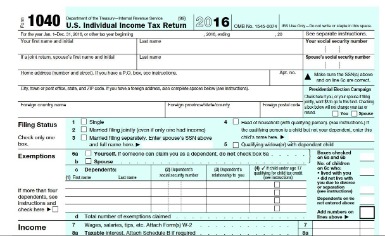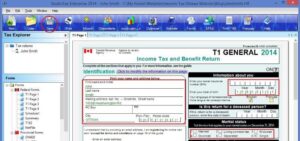
The fixed charge coverage ratio is very helpful for any company that has any fixed expenses they have to pay. One fixed charge (expense) is interest payments on debt, but that is covered by the times interest earned ratio. We don’t know if this is good or bad since we do not know the debt-to-asset ratio for firms in this company’s industry. However, we do know that the company has a problem with its fixed asset ratio which may be affecting the debt-to-asset ratio. Here is the balance sheet we are going to use for our financial ratio tutorial.

Gross Profit Ratio Formula
If we deduct indirect expenses from the amount of gross profit, we arrive at net profit. In other words, gross profit is the sum of indirect expenses and net profit. Using simple ratios is a good way to keep an eye on the financial health and performance of your business.
Accounting Ratios with Examples
He is a CFA charterholder as well as holding FINRA Series 7, 55 & 63 licenses. He currently researches and teaches economic sociology and the social studies of finance at the Hebrew University in Jerusalem. If a person has more savings than they do debt, it means they are more financially liquid.
Master 28 Key Accounting Ratios: Formulas for Success
- For example, a company with high long-term debt but low short-term debt would have high operating leverage.
- This ratio can also calculate how long it will take to move the on-hand inventory.
- Over-trading companies are likely to face substantial difficulties in meeting their day-to-day obligations.
- This financial statement analysis technique method expresses each line item in a financial statement as percentages of base figures, usually total assets or total revenue.
Outflows include cash used to repay debt or pay dividends to shareholders. This section reveals how the company is financing its cash reconciliation operations and how much it is returning to investors. It details the cash generated from a company’s core business activities.
Leverage Financial Ratios

This article will focus on measures of financial performance and will detail the skills and knowledge expected from candidates in the FMA/MA exam. Current liabilities are money you owe to others and are due within a year. Current liabilities include accounts payable, wages and taxes payable, accrued expenses and overdrafts. By entering different period figures into the calculator, it is easy to compare two periods. A low limited interest cover indicates a high level of risk for the company. In contrast, a high fixed interest cover suggests the business is financially better than it seems.
Accounting Ratios – Recommended Reading
Accounting Ratios are indicators of a company’s financial health, including profitability and liquidity. Accounting ratios are also used to spot companies in potential financial distress. This financial statement analysis technique method expresses each line item in a financial statement as percentages of base figures, usually total assets or total revenue. This allows you to compare the relative composition of the financial statement across different periods or companies. Liquidity ratios assess if a company will be successful in meeting its short-term debt obligations using its current assets.
The price-to-earnings (P/E) ratio is a measure of how much investors are willing to pay for each dollar of a company’s earnings. The P/E ratio is calculated by dividing the market price of a share by the earnings per share. However, if the current ratio of a company is below 1, it shows that it has more current liabilities than current assets (i.e., negative working capital). If the current ratio of a business is 1 or more, it means it has more current assets than current liabilities (i.e., positive working capital).
However, companies can make small changes that make their stock and company ratios more attractive without changing any underlying financial fundamentals. To counter this limitation, investors also need to understand the variables behind ratios, what information they do and do not communicate, and how they are susceptible to manipulation. Liquidity refers to the amount of money an individual or corporation has on hand and the ability to quickly convert assets into cash. The higher the liquidity, the easier it is to meet financial obligations, whether you’re a business or a human being.
For example, if a company sells products that are relatively high in price but low in volume, it may need help generating high margins. Conversely, if a company sells products at lower prices but higher volumes, it may have higher margins. Someone on our team will connect you with a financial professional in our network holding the correct designation and expertise. Ask a question about your financial situation providing as much detail as possible.
This ratio indicates how profitable the company is overall and helps identify whether there are any problems with asset utilization or liquidity. A debt service coverage ratio above 1 indicates that the company is in good financial shape and can afford to pay off its debts. A lower number suggests that the company may need more money to cover all of its obligations and could face financial problems in the intuit tax calculator future. It is essential to remember that not all ratios are equal, and some may be more useful than others depending on the situation. A low current ratio may indicate the company is not able to cover its current liabilities without having to sell its investments or delay payment on its own debts. Financial ratios are the most common and widespread tools used to analyze a business’ financial standing.
ROI can be calculated over any period of time, but it’s most commonly calculated on an annual basis. This allows for easier comparison between different investments and provides a standardized measure of performance. However, in some cases, ROI can also be calculated over shorter online customer credit application software or longer periods depending on the specific context and needs of the analysis. Accounting Ratios provide a window into the company’s operations and priorities. For example, debt ratios can indicate whether the company can avoid bankruptcy due to a business disruption.
By contrast, in the case of Company Y, 75% of the current assets are made up of these two liquid resources. The current assets are cash or assets that are expected to turn into cash within the current year. Refer back to the income statement and balance sheet as you work through the tutorial. Valuation ratios give insight into a company’s share price to evaluate its investment potential. A debt ratio greater than 1 means a large number of a company’s assets are funded by debt. This could indicate a greater risk of loan default, especially if interest rates rise.
